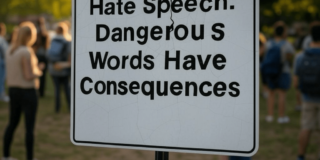For today’s post I’m borrowing a theme from Turgenev, specifically from The Diary of a Superfluous Man. As readers of Turgenev will know, much of his fiction is associated with variations on this “superfluous” type, a hero who fails not simply at love, but in other arenas as well. Turgenev’s plots often hang on anticipation without consummation. So it is with Indigenous Australians.
Anticipation without consummation has been the lot of the Indigenous Australian since 26th January, 1788. On that faithful day our culture, our way of life, indeed our very existence was placed in the balance by an invader whose ways we did not understand and whose malice we greatly underestimated.
In the beginning, 26th January 1788, the Gadigal anticipated that the strangers would simply go away as they believed that they were merely passing through. This was the first instance, in our long history as a people, of anticipation without consummation when dealing with the English invaders.
Following the establishment of the Continent’s first penal settlement at Sydney Cove and the destructions of the clans that had inhabited that area for tens of millennia before the arrival of the English invaders, the remaining clans and tribes anticipated that they would be allowed to continue in their traditional ways. This way of thinking was to seriously underestimate the malice of the ‘worshippers of the dead man on a cross’ and was the second instance of anticipation without consummation when dealing with the English invaders.
Between 1788 and 1836, we, the original inhabitants of Australia, were subject to a series of broken promises; deception and outright lies, all of which are sins in the religion of the ‘worshippers of the dead man on a cross’, all of which were done in a premeditated move to dispossess us of our land.
In 1836 we were made to suffer the indignity of the decision in R v Murrell. Profound and erudite as the judgement in Murrell’s case may have been, it had the effect of making all Aborigines in Australia for all time a category of person’s sui generis, living under the King’s protection within the King’s peace, but as individuals not as corporate groups. As such, under the law of nations we fell within the jurisdiction of colonial courts and governance. Being neither Christian nor white we were deemed by the Murrell judgement to be no more than perpetual inhabitants of the land, meaning citizens of an inferior order subject to society without participating in all its advantages.
R v Murrell ushered in a new era for Indigenous Australia and paved the way for all the massacres, missions, maltreatment and forced assimilation we have endured as a people. Following the decision in Murrell’s case, we went from being owners to outcasts, criminals and finally fauna in our own land. Prior to Murrell the invaders purported to regard us as equals, all being the children of the ‘dead man on a cross’. Following Murrell, all pretence at equality ceased, we became fauna. This was the third instance of anticipation without consummation when dealing with the English invaders.
Between 1836 and 1967 we were regarded as a problem, perhaps we still are regarded by some ‘whites’, if not the majority, as being a problem. Problems need to be addressed. As R.F. Delderfield would have us believe, God is an Englishman. As we were not Englishmen the only solution to the problem was genocide. In fact the policy of genocide, though it was never officially recognized as such, started by the ‘worshippers of the dead man on a cross’ was almost a complete success. For example:
“…between 1862 and 1911 the South Australian government was the administrator of the Northern Territory. The Territory was home to approximately 72,000 indigenous people and largely untouched by white Australians. At the 1881 Census there were only 79 male and three female non-indigenous people living between the South Australian border and Barrow Creek.
When the Commonwealth Government took over administration of the Northern Territory from South Australia on January 1, 1911. The population was as follows:
Europeans: 1,200
Non-Aboriginal population: 2,800 (Chinese/Malays/Japanese)
Aboriginal population: 22,000
Under the 50 year control of the South Australian Government the indigenous population of the Northern Territory had declined by 50 000. Conditions were appalling. Men outnumbered women by 4 to 1. Aboriginal women were in ‘demand’ and were presumed to be ‘available’. Some sexual economy was negotiated, usually via opium or alcohol, however often it was not. Of 100 women examined by a South Australian Medical Officer in 1909, only one was found to be free of sexually transmitted diseases”. (J W Bleakley, Chief Protector of Aborigines, Queensland, 1929)
It is impossible say to say with any certainty how many Indigenous people were in Australia before the arrival of the first white settlers, but it has been estimated to be anywhere between 300 000 and one million. By Federation in 1901 that number had dropped to as few as 100 000.
The following extract from the Commonwealth Parliamentary Debates for 1901 illuminates clearly some of the prevailing attitudes regarding Indigenous Australians at Federation:
“Senator Matheson: We all admit that the black people have to live. What we say is that the black people should live in their own country.
Senator Walker: This was a blackfellows country before it was a white man’s country.
Senator Matheson: The honourable gentleman said that to me privately yesterday, and he seemed to think that that settled the question. He fails to recognise that we have taken this country from the blacks, and made it a white man’s country, so that there is no earthly use in the honourable gentleman saying that 100 years ago this was a black man’s country.
Senator Walker: There are still 100,000 aborigines in Australia.
Senator Matheson: We are aware of that fact, and it is very regrettable, and the only consolation we have is that they are gradually dying out.
(Commonwealth Parliamentary Debates, May 22, 1901, vol. 1, p152)
Because we would not dutifully die out as hoped by the ‘worshippers of the dead man on a cross’, the answer to the problem became assimilation.
“…the problem, in its simplest form, is that of assimilation. They [the governments of the Commonwealth of Australia and the states, the Commonwealth being responsible for the Aborigines in the Northern Territory] agree that the numerically small aboriginal group within the vastly larger white Australian group must, to survive and to prosper, learn to live as white Australians do…” (The Skills of Our Aborigines, 1960, official Australian Government publication “printed under the authority of the Acting Minister for Territories”.)
Finally, on 27thMay 1967 a Federal referendum was held. The first question, referred to as the ‘nexus question’, was an attempt to alter the balance of numbers in the Senate and the House of Representatives. The second question was to determine whether two references in the Australian Constitution, which discriminated against Aboriginal people, should be removed. This fact sheet addresses the second question.
The sections of the Constitution under scrutiny were:
51. The Parliament shall, subject to this Constitution, have power to make laws for the peace, order, and good government of the Commonwealth with respect to:-
…(xxvi) The people of any race, other than the aboriginal people in any State, for whom it is necessary to make special laws.
127. In reckoning the numbers of the people of the Commonwealth, or of a State or other part of the Commonwealth, aboriginal natives should not be counted.
The removal of the words ‘… other than the aboriginal people in any State…‘ in section 51(xxvi) and the whole of section 127 were considered by many to be representative of the prevailing movement for political change within Indigenous affairs. As a result of the political climate, this referendum saw the highest YES vote ever recorded in a Federal referendum, with 90.77 per cent voting for change.
Equality at last, or was this going to be the fourth instance of anticipation without consummation when dealing with the English invaders?
Well, we are now forty-four years down the track from the 1967 referendum. Since then Australia has witnessed the introduction of legislation making racial discrimination illegal, though apparently the provisions of the Racial Discrimination Act ‘RDA’ can be set aside by the strike of a pen, as well as the 2008 historic apology to the Stolen Generation(s) made then Prime Minister Rudd. But what has changed? In reality, nothing!
Under the life expectation estimation formula adopted by the Australian Bureau of Statistics ‘ABS’ in 2003, Indigenous males’ life expectation was estimated to be 59.4 years over 1996-2001, while female life expectation was estimated to be 64.8 years; a life expectation inequality gap when compared to the general Australian population of approximately 17 years for the same five year period.
In the 2006 Census, the mean equivalised gross household income for Indigenous persons was $460 per week, which amounted to 62% of the rate for non-Indigenous Australians ($740 per week).
In the 2006 Census, the unemployment rate for Indigenous peoples was 16%. The ABS records show that the unemployment rate for Australia in 2006 was 5.2%. Indigenous Australians were therefore three times more likely to be unemployed than non-Indigenous Australians.
The Royal Commission into Aboriginal Deaths in Custody (RCIADIC) reported in 1991. At that time, Aboriginal people made up 14% of the total prison population and were up to 15 times more likely to be in prison than non-Aboriginal people. The Report made a large number of recommendations to address this issue.
Despite this, the number of Indigenous prisoners has increased significantly over the 17-years since the RDIADC. Indigenous prisoners represented 24% of the total prisoner population (6139 males and 567 females) as of the 30th June 2008, a proportion unchanged from the previous year.
A 2003 study demonstrates the extent of contact Indigenous peoples have with criminal justice processes in New South Wales. Between 1997 and 2001, a total of 25,000 Indigenous peoples appeared in a NSW Court charged with a criminal offence. This constitutes 28.6% of the total NSW Indigenous population. In the year 2001 alone, nearly one in five Indigenous males in NSW appeared in Court charged with a criminal offence. For Indigenous males aged 20-24 years, this rate increased to over 40%. (D Weatherburn, B Lind, B Hua and J Hua, ‘Contact with the New South Wales court and prison system: the influence of age, Indigenous status and gender’ (2003) Crime and Justice Bulletin 78(1) p 4-5.
In 2005-06, Indigenous young people are significantly overrepresented in the juvenile justice system; 44 per 1,000 Indigenous youths were under juvenile justice supervision, while only 3 per 1,000 non-Indigenous youths were under such supervision. (Australian Institute of Health and Welfare and Australian Bureau of Statistics, The Health and Welfare of Australia’s Aboriginal and Torres Strait Islander Peoples 2008, ABS cat no 4704.0 (2008) p 228)
What is interesting about Indigenous Australians and the criminal ‘justice’ system is that on the basis of my own experience and research, Australian police services are reluctant to investigate crimes committed against Indigenous Australians by non-Indigenous Australians. This reluctance to investigate and therefore prosecute crimes committed against Indigenous Australians by non-Indigenous Australians obviously skews the statistics in regards to non-Indigenous versus Indigenous criminality.
As my own research demonstrates, the Australian Federal Police are the most active police service in Australia in refusing to investigate crimes committed against Indigenous Australians by non-Indigenous Australians.
To the average Australian we still remain superfluous people, while some of us may now be Christian we are still not white and remain nothing more than perpetual inhabitants of the land, citizens of an inferior order, subject to society without participating in all its advantages. We do indeed appear to be heading for our fourth instance of anticipation without consummation when dealing with the English invaders.


